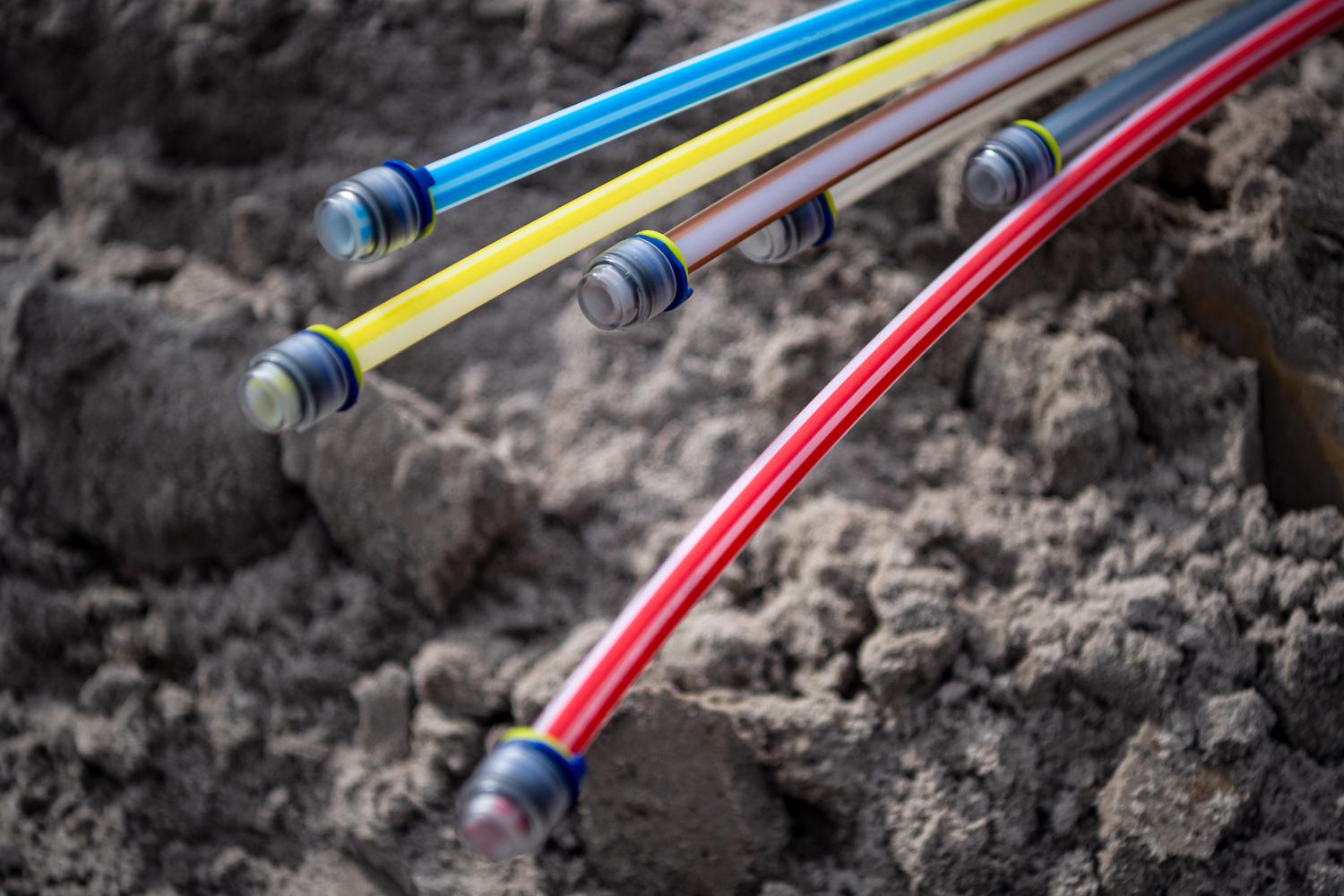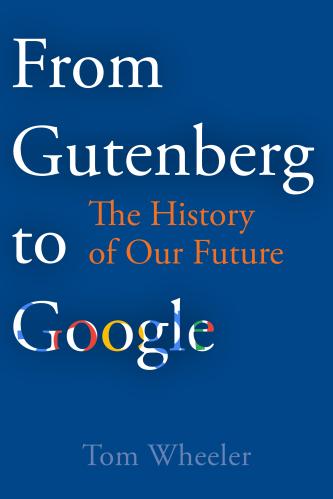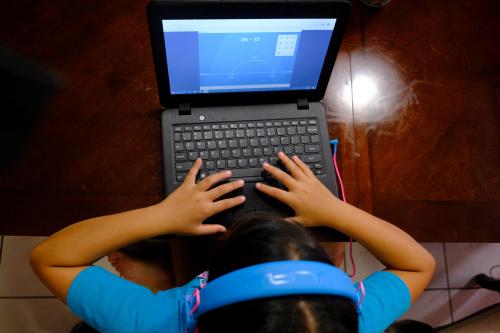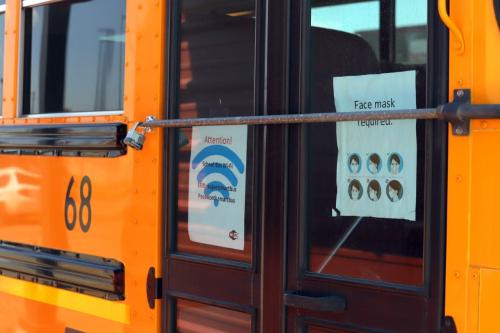President Biden told the joint session of Congress he was asking Vice President Harris to take the lead on the broadband component of his infrastructure plan, “because I know it will get done.” The headlines emphasized the statement, “I am asking the vice president to lead this effort.” They called attention to how placing a high-profile figure such as the vice president in charge of closing the digital divide signals the issue’s high priority.
To the readers of political tea leaves, however, there are other signals in this announcement. Why, for instance, does the $100 billion broadband proposal require special effort when other large expenditures such as $174 billion for electric vehicles, or the $213 billion for affordable housing, or the $100 billion for clean energy do not need such a Sherpa? The answer is in the statement’s rationale: “I know it will get done.” Thus deputized, the vice president has an open door to make whatever changes might be necessary to the original proposal to produce results instead of rhetoric.
President Biden has made it explicit that he is “prepared to compromise” when it comes to the specifics of his infrastructure proposal, aka the American Jobs Plan. A group of Republican senators have proposed an alternative $65 billion plan to connect unserved areas rather than the Biden $80 billion proposal for rural deployment and $20 billion for other support programs, including the Emergency Broadband Benefit for low-income Americans. A deal is within reach. The vice president—who as a senator proposed her own broadband program—can bring it about.
“Finding a consensus will require going beyond the big headline numbers and diving into the details.”
Finding such a consensus will require going beyond the big headline numbers and diving into the details. There are two core issues that must be resolved if broadband bill is to be brokered: prioritizing expenditures for unserved areas and moving beyond temporary solutions to address the adoption problem for low-income families. Each of these issues, seemingly so straightforward and simple, is fraught with nuanced clashes between the public interest and corporate interests that will require a deft hand from the vice president.
Prioritizing Unserved Area Deployment
The president has repeatedly cited the statistic that 35% of rural Americans lack high-speed broadband access. Since the dawn of the internet, the federal government has spent tens of billions of dollars, principally to subsidize rural telephone companies, in an effort to expand broadband reach. Yet there are still around 30 million rural Americans, according to the White House, without access to the most important network of the 21st century.
As Chairman of the Federal Communications Commission (FCC) during the second Obama term, I was responsible for the principal federal subsidy program for rural connectivity. The failure of that program to do the job prompted us to propose a plan that would build rural internet connections the same way we build rural highways. Instead of piecemeal subsidies, the federal government should pay once and get the job done. In 2017, Paul de Sa, the FCC’s chief of planning and analysis, produced an excellent report on the costs of such an approach. His analysis forecast a cost of $80 billion to connect fiber optic-based service to all the unserved locations in America. That study became the basis of the Biden proposal.
When it comes to implementing the rural deployment proposal, at least three sub-issues arise: the definition of what constitutes, in the President’s words, “future proof” broadband, the definition and prioritization of unserved areas, and the role to be played by not-for-profit entities.
Fiber is future proof
Connection via optical fiber cables (including the hybrid fiber-coax technology used by cable companies) should be the preferred use of public funds. Future proofing such expenditures means ensuring the ability to respond to continued growth in demand through a network with the ability to grow its capacity at the lowest incremental cost as demand warrants.
Over 100 million connected devices were added to American homes in 2020, bringing the total to over one billion. AT&T reports the average home today has 13 connected devices—from TVs to smartphones, tablets, computers, game devices and personal assistants, such as Alexa—a number, AT&T forecasts, that will almost triple by 2025 to 35 connected devices per home.
A new study by market researcher OpenVault has found a 40% jump—the largest in almost a decade—in broadband usage over the past year. The average household’s broadband consumption is now projected to be between 600 and 650 gigabytes by December 2021.
As demand surges, the great benefit of a fiber-based investment is that once the fiber is laid, the ability of that connection to improve its capacity is largely a matter of changing the electronics rather than rebuilding new connections. The expanding capacity of fiber has been driven by the combination of increased processing power at the ends of the network (as expressed in Moore’s Law) and the ability to handle that increased capacity (Keck’s Law). As computing capacity has increased and its costs have declined, the capability of fiber has followed a similar path. Because the signal is constrained within the wire, a fiber-based infrastructure is also much more scalable than wireless and satellite services that are limited by the amount of allocated spectrum and the way electromagnetic signals propagate through space.

Future-proofing the infrastructure investment means installing fiber. Spending federal dollars to build infrastructure that may be adequate for today’s level of demand but is less scalable to meet the demands of tomorrow is poor stewardship of the public’s monies, as it would postpone the problem, not solve it once and for all.
Defining ‘unserved’
To avoid prescribing a specific technological solution, the infrastructure legislation defined the “what” to be delivered rather than the “how” of its delivery method. As the legislation moves through the process, the difference between what new infrastructure is funded (i.e., the minimum service standard requirement to obtain a subsidy) needs to be distinguished from where such funding will be available (i.e., the definition of unserved areas).
Any identification of “where” begins with the FCC’s 2015 definition of “broadband” as 25 megabits per second (Mbps) into the home and 3 Mbps out. The FCC’s 2017 cost study attached an $80 billion price tag to connecting with greenfield fiber all the homes that did not meet that definition or met the standard but did not have a fiber and/or cable connection capable of efficient future scaling.
The legislation implementing the broadband plan moves beyond the 2015 benchmark to define an “unserved” area as one where at least 90% of the population does not have access to at least 25 Mbps both into and out of the home. While arguably the expectation of symmetrical service is an increase from the FCC’s asymmetrical 2015 definition, it is a distinction without a practical difference for the 2017 $80 billion cost estimate, because a fiber network or cable network is per se capable of the required symmetry. Yet, even with this new definition, the legislation calls for first priority to be given to areas where everyone agrees are most deserving: those without 25 Mbps down and 3 Mbps up from any provider.
Having identified “unserved” areas, the focus turns to the definition of what constitutes acceptable service to be paid for with federal funds.
The legislation prioritizes the construction of broadband networks capable of symmetrical 1 gigabit per second (Gbps) service. Quite logically, when building new connections in unserved rural areas, those networks should be equivalent to what technology can offer in other areas. The cable industry, for instance, reports that 80% of American homes have access to service delivering a downstream 1 Gbps service (approximately 40 times faster than the FCC definition). Spending government funds to build a service in rural areas that is inferior to what technology can offer in urban and suburban America is far from a responsible use of taxpayer dollars.
The legislation’s frequent use of symmetrical standards, however, has raised concerns in some quarters. For those companies currently meeting the FCC’s 2015 asymmetrical standard, the fear is that while their area will not be prioritized, it will still be considered “unserved” because the service isn’t 25 Mbps both up and down. For the cable industry, the concern is even more daunting because their hybrid fiber-coax technology’s blazing 1 Gbps download service could be deemed inadequate because upload speeds are an asymmetrical 35 Mbps.1 Fueling these concerns is a constituency of companies that would love to receive federal funds to overbuild and compete with the existing providers.
There is no doubt that telecommunications policy should encourage competitive alternatives for consumers, but it is important to keep our eye on the prize of universal connectivity. First, there must be at least one high-quality provider; for 35% of rural Americans, that threshold has not yet been achieved. The FCC study estimated a cost of $80 billion to connect consumers to their first provider, ensuring that provider would use future-proofed fiber. The broadband plan gives clear priority to those unserved areas with precisely that amount of funding.
When public interest meets corporate interest
When federal dollars are being disbursed, the return on investment in lobbying expenditures can be astronomical. It is no surprise, therefore, that those who have alternative, non-fiber delivery systems—principally wireless and satellite services—are pushing for a place at the disbursement window.
The argument will be that wireless or satellite is “good enough” in comparison to the cost and time to deployment. Commerce Secretary Gina Raimondo has already indicated the Administration will “consider alternatives to fiber in the cases where that [alternative] is the best, most effective way to deliver broadband.”
The FCC analysis suggested the rural connectivity challenge broke into two levels. For approximately 85% of unserved locations, a one-time fiber investment would cost about $40 billion and require no ongoing subsidization. The last 15% would require another $40 billion and would require ongoing subsidization to address shortfalls in operating expenses.
If the push by wireless and satellite providers to receive funds forces a compromise, policymakers can certainly make that cost-benefit tradeoff decision. It should, however, be focused on the final 15% of unserved locations discussed in the FCC study. Such a tradeoff should be for the hardest to serve and most expensive areas—the last 15% identified by the FCC study—not as a substitute for delivering best available urban-quality fiber service to the other 85% of unserved rural Americans.
Not-for-profit providers
One reason the FCC’s high-cost subsidy program failed to deliver universal service is because even with the subsidy the rural telephone companies complained they could not make a profit. The Biden broadband proposal, thus, encourages not-for-profit entities such as co-ops and local governments to apply for support.
In response to this idea—that government would look beyond the traditional industry—the existing network providers went ballistic. The head of the cable association described such a suggestion as “slightly Soviet.”
Hyperbole, however, is not policy. Are the for-profit companies really going to fight for the ability to deliver service in unprofitable areas that have, to date, been neglected? Or is their real concern whether the bill will subsidize non-profits to “overbuild” the existing cable and telephone company plant? The focus of the infrastructure bill should be buildout as opposed to build-over. As worthwhile as a competitive choice might be for rural consumers, policy makers should prioritize the “where there is none, make sure there is one” approach while at the same time ensuring that the “one” is not just “good enough” for today but for well into the future.
If the not-for-profit provisions are targeted to unserved areas and if non-profit entities can best operate in those hard-to-serve areas—which, of course, have long been available to for-profit providers—they should not be precluded from doing so.
Adoption
There are more Americans who could connect to high-speed broadband but do not than there are individuals who cannot connect. While these non-users tend to be congregated in urban America, there are also millions in rural areas. The non-use by these individuals is the result of many factors, but principal among them is cost.
The infrastructure legislation contains $6 billion for the FCC-administered Emergency Broadband Benefit (EBB) program originally created by the COVID-relief CARES Act. This is an important initiative that provides low-income Americans with up to $50 per month to pay for a broadband connection. The program’s major flaw is exemplified in its name—it is a temporary “Emergency” program rather than something permanent. A revised broadband plan should include a permanent broadband connection subsidy program for low-income Americans participating in SNAP and other support programs.
This is not new turf to Vice President Harris. As a senator she sponsored S. 4131 which addressed both broadband deployment and adoption. As a solution to the adoption problem, the Harris bill required internet service providers (ISPs) to “provide an eligible household with an internet service offering…[and] discount the price” to a level equal to the amount of a “broadband benefit” also established in the bill. This approach was similar to what the Reagan administration created in 1985 to support telephone service for low-income Americans. At that time, the Republican-led FCC created the Lifeline program, to “make communications services more affordable for low-income consumers” through a $9.25 monthly subsidy to cover a low tier telephone service.
The original Lifeline concept was to make sure that everyone could make an emergency call. In 2016, the Obama FCC expanded the program’s scope to allow the subsidy to be applied to internet service provided as part of phone service, including mobile phone service. Unfortunately, that was as far as the law would allow the FCC to go. Yet, we all know that doing homework or applying for a job on the small screen of a smartphone is hardly adequate access to the internet.
“It is long past the time when we should have a Lifeline-like program for home broadband. Vice President Harris’ leadership can make this a reality.”
It is long past the time when we should have a Lifeline-like program for home broadband. Vice President Harris’ leadership can make this a reality. Broadband companies have responsibly shown the way forward for such a program. Comcast’s Internet Essentials, for instance, provides broadband connections to eligible low-income Americans for $9.95 per month. A coalition of internet service providers has proposed that the White House make broadband support permanent. It is good business for the companies that will benefit from new subscriber revenue and good policy that will expand broadband usage in the largest cohort of non-users. But it should also go farther.
Of course, any company that receives a federal broadband deployment payment should be required to provide a low-cost, high-speed broadband tier for low-income Americans. But all the ISPs, whether receiving support or not, should welcome the opportunity to follow the lead of the Harris bill to guarantee a low-cost tier with meaningful speeds.2 They should do this regardless of whether there is a federal subsidy for that tier.
The President has expressed concern that “continually providing subsidies to cover the cost of overpriced internet service is not the right long-term solution for consumers or taxpayers.” The industry can attack the broad “overpriced” concern in two ways. It should welcome including a low-cost tier for low-income Americans in the broadband legislation (including appropriate increases in service speeds as circumstances warrant and capping price increases at the rate of inflation). It can also embrace the standby rate review authority in the FCC’s 2015 Open Internet Order (i.e., net neutrality) and the broadband legislation’s mandatory collection and assessment of pricing data by the FCC.
The ISPs should want a single federal approach rather than multiple (and perhaps inconsistent) state efforts. New York state has already enacted its own solution to the adoption and low-income rates issues. It has required ISPs to offer a 25 Mbps download service for $15.00 a month and a 200 Mbps service for $20.00. The ISPs have sued to overturn the law fearing it is the opening salvo of state-level rate regulation.3
The Fact Sheet distributed by the White House states, “Americans pay too much for the internet—much more than people in other countries—and the President is committed to working with Congress to find a solution to reduce internet prices for all Americans.” Talk of such rate regulation is waving a red cape in front of the internet companies.
The President’s observation that rate regulation is dependent on “working with Congress” suggests a long climb on the issue. How the companies behave will determine that long-term outcome. The leaders of the major cable broadband companies were around after the deregulation of cable television in 1984 when prices increased so much that Congress passed legislation to regulate cable rates. By their actions on broadband, they will once again be known. Collecting pricing data is a responsible and necessary action by the federal government. Resurrecting the 2015 Open Internet Rule, whether at the FCC or in legislation, would protect the public by creating the necessary standby rate regulation authority should circumstances warrant.
After 4 Years, Finally…
For the four years of the Trump administration, the Chairman of the FCC would make pronouncements about how closing the digital divide was his “number one priority.” The actions of the FCC and the Trump administration never came close to living up to that claim.
The Biden administration has taken action. During the Trump era, the promise of a soon-to-come “infrastructure week” was a running gag. In his first 100 days, President Biden laid down a bold new plan for American infrastructure—including the infrastructure of the broadband internet. Vice President Harris is in charge to assure “it will get done.”
That there should be universal broadband deployment should be a question beyond debate. That low-income Americans in both rural and areas should have support for broadband access, like they have for telephone access, should similarly be beyond debate.
“That there should be universal broadband deployment should be a question beyond debate.”
Senate Majority Leader Chuck Schumer (D-NY) has identified the politics of a rural-urban “great coalition” to strengthen broadband access for all. In Republican rural areas such a coalition would support deployment as well as access for the rural poor. In Democratic urban areas the coalition would attack the primary cause of low-income families remaining unconnected to the internet.
This important issue should not devolve into a struggle between the public interest of connecting all Americans and the corporate interests. Vice President Harris now has the baton; her previous legislative initiative indicates her appreciation of the interests and issues involved. Finally, the time has come to move beyond talking about the digital divide to actually doing something creative and dynamic about the problem.
The Brookings Institution is a nonprofit organization devoted to independent research and policy solutions. Its mission is to conduct high-quality, independent research and, based on that research, to provide innovative, practical recommendations for policymakers and the public. The conclusions and recommendations of any Brookings publication are solely those of its author(s), and do not reflect the views of the Institution, its management, or its other scholars.
Comcast and AT&T provide general, unrestricted support to the Institution. The findings, interpretations, and conclusions in this report are not influenced by any donation. Brookings recognizes that the value it provides is in its absolute commitment to quality, independence, and impact. Activities supported by its donors reflect this commitment.
-
Footnotes
- For cable, however, the good news is both the announcement by Comcast—the nation’s largest broadband provider—of tests demonstrating the ability to deliver symmetrical 1 GB service, and the new DOCSIS 4.0 technology that supports up to 6 Gbps symmetrical.
- Comcast recently increased their Internet Essential speeds to 50 Mbps down and 5 Mbps up for $9.95 per month plus tax.
- The FCC’s 2015 Open Internet Order would have prevented such a state law. When the Trump FCC overturned that decision, it also ruled that the FCC had no authority over ISPs—a void that is now being filled by state actions.
The Brookings Institution is committed to quality, independence, and impact.
We are supported by a diverse array of funders. In line with our values and policies, each Brookings publication represents the sole views of its author(s).






